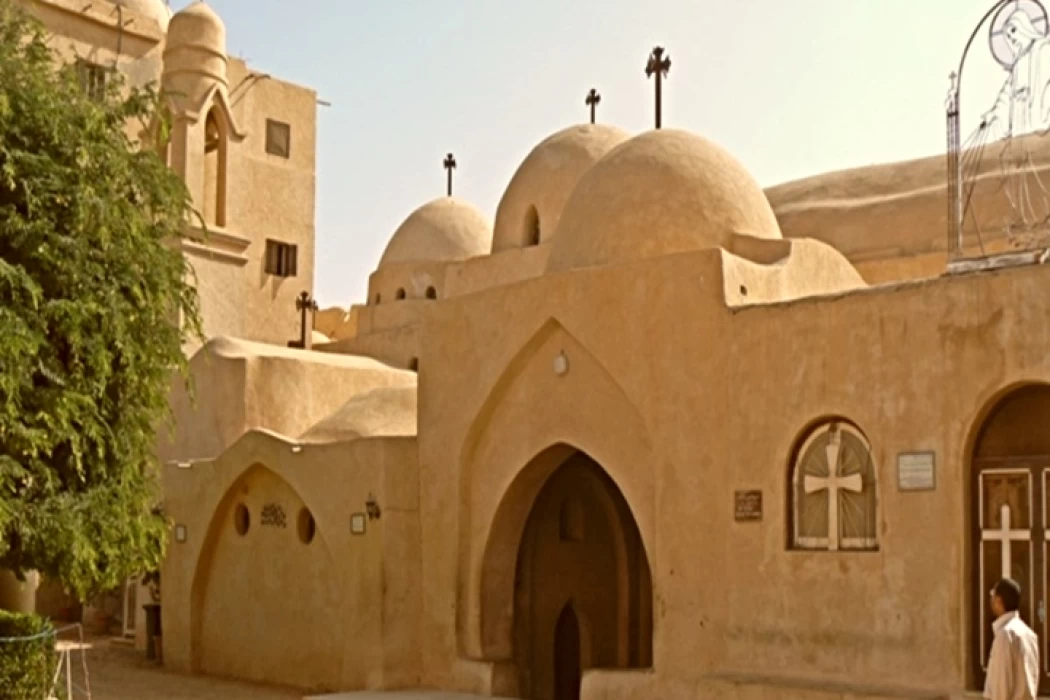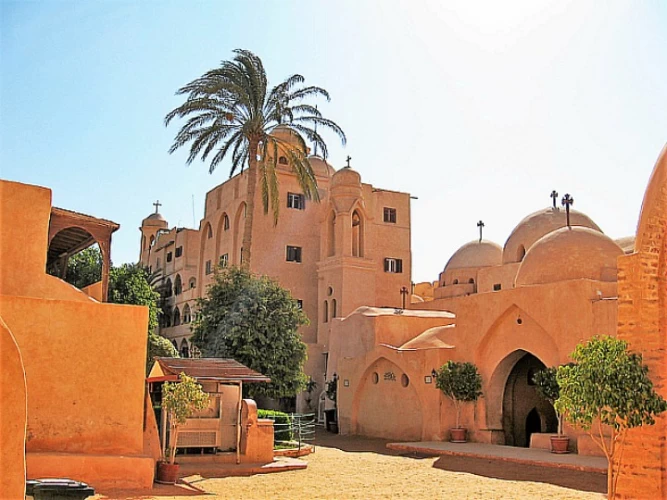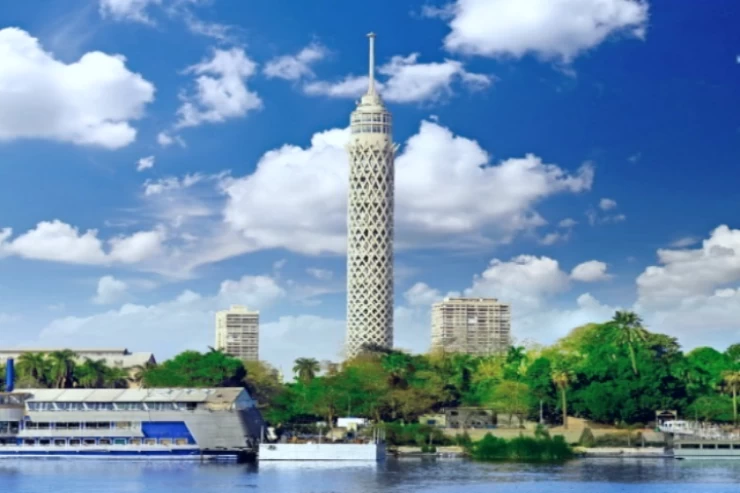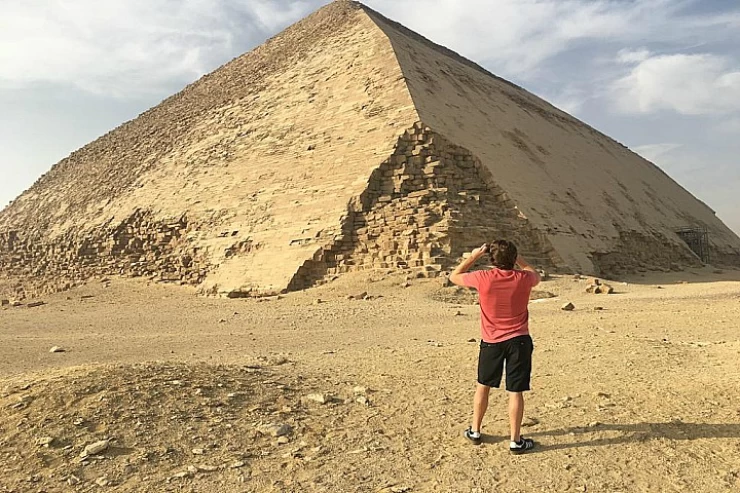
The Monastery of El Suryan | Deir Al-Surian Cairo Attractions
While each monastery has its own unique features, whether ancient monuments such as walls and fortresses or picturesque nature, the Monastery of the Virgin Mary holds the title of the oldest Orthodox monastery, and is unique in having the “Gate of Symbols and Prophecies” and the “Miracle Tree” which add to its sanctity and history.
The Monastery of the Virgin Mary in Syria was built in the 5th century AD, and was named so because many Syrian monks resided there over the centuries. The main church in the monastery is attributed to the Virgin Mary, and contains wonderful murals, and the sanctuary is topped by a dome decorated with scenes from the Bible, such as a scene depicting the birth of Jesus Christ.
This monastery contains the most famous door of the temple, which is a unique masterpiece, the (Door of Symbols) or (Door of Prophecies), which is an icon holder (Coptic Christian images) that clearly reflects the unity that connects the Orthodox churches.
Regarding the story of this door, Father Athanasius the Syrian, who is responsible for explaining the features of the monastery to visitors, narrated that the Monastery of the Virgin Mary and Anba Youhannes Kama, known as the Monastery of the Syrians, was founded in the fifth century, and that its most important feature is the “Gate of Prophecies” that was made by the Syriac monks (from Syria). The monastery was named “the Syrians” in reference to them, adding: “It was where monks from the sister Syriac Orthodox Church lived side by side with the Coptic monks for many centuries (from the eighth to the sixteenth centuries).”
Despite the difference in language and rituals between the Syriac and Coptic monks, they lived in harmony and tolerance, as the Syriac monks performed their prayers in the Church of the Virgin Mary, while the Copts practiced their rituals in the Church of the Virgin Mary Cave. One of the most important things they made in the monastery was the (Gate of Symbols) or (Gate of Prophecies), which represents a historical religious secret, as its drawings embody the journey of Christianity through the ages, starting from the birth of Christ until his second coming.
The miraculous tree of St. Ephrem
Regarding the story of the famous tree in the monastery, Father Athanasius said that it is a unique tree belonging to Saint Ephrem the Syrian, and Mar is a Syriac word that means the saint because his life was full of holiness.
It was narrated that this saint came to visit the Syrian Monastery and was unable to hold his cane in the sand. He also intended to visit Anba Bishoy in his cave. When the monks saw that, they said that it was not suitable because the one who holds his cane is the bishop or the old monk. Whoever is humble, Mar Ephrem left his cane. Our Lord wanted to show his humility and that he is a saint, so his cane grew to become a large tree with branches from the fourth century, and that is why it still exists. It is a tamarind tree, which is not found in Egypt, and it grows more in hot places in Africa and India. Therefore, it is a miraculous tree and the monastery is distinguished by it.
The Monastery of the Virgin Mary the Syrian is considered one of the most prominent historical monasteries in the history of the church, as its construction dates back to the fifth century AD. The old fortress is located to the right of the entrance to the monastery, although it has been restored. However, it is known that the one who built these fortresses in the monasteries was King Zeno (474 AD - 491 AD) in honor of his daughter, the nun Hilaria, who became a monk in the Scetis Desert and became famous throughout the world. There is a manuscript in the London Library of the Maimer of Mar Jacob of Serugh, the date of its copying in the monastery dates back to the year 603 AD.
The famous historian "Butler" mentions that the barriers of the Church of the Virgin Mary of Syriac date back to before the year 700 AD, and in this respect it is similar to the Church of Anba Bishoy and the Church of the Virgin Mary of Baramous. These churches are the oldest relics of the desert up to the present time.
Since the fourth century, the Syrians have called it the desert of Shehit, which is widely known throughout the world, to the point that people would come to it from different countries of the world to visit it and receive blessings from the ascetics who had reached high spiritual levels or to worship, just as Saint Arsenius, the teacher of the sons of kings, and Saints Maximus and Domatius, the sons of the Roman king, came and lived in the desert.
The remains of the ancient monasteries are still located approximately 3 kilometers southeast of the monastery, including the Monastery of Anba Youhannes Kama, the Monastery of Abanoub, the Monastery of the Ethiopians, the Monastery of the Armenians, and the Monastery of Anba Youhannes al-Qasir.

















